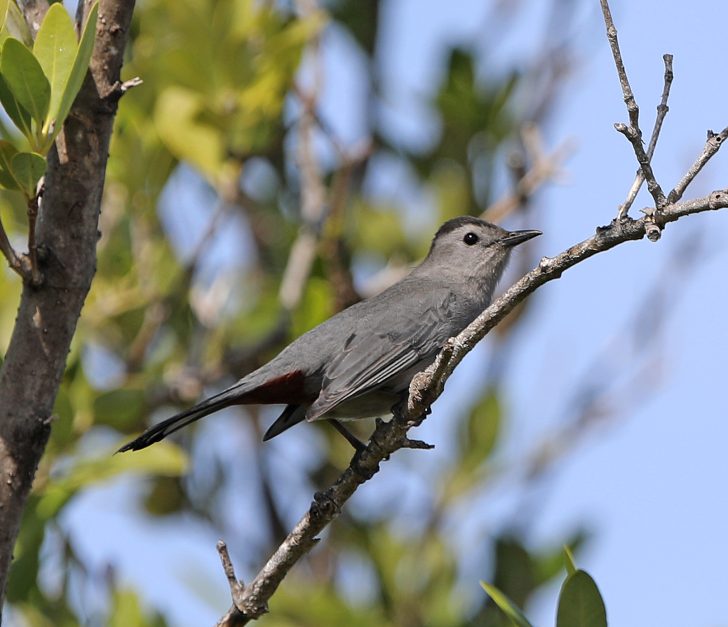Several bird species migrate South for the Winter and call Florida home until the weather warms enough to head home to breed. A few of the most common ones are the gray catbird, yellow-rumped warbler and the palm warbler.
Gray catbirds are more often heard than seen. Their call is the reason for their name, as it sounds similar to a raspy cats “meow.” They are dark gray with a black cap on their head. The tail feathers are black and rusty orange. The catbirds are secretive and prefer dense cover. They also like to feed near or on the ground sometimes turning over leaf debris in search of food. Look for catbirds in heavy cover areas near mangroves, scrubby areas and parks near waterbodies.
Another very common species that winters in Florida is the yellow-rumped warbler. Wintering yellow-rumped warblers are somewhat plain in appearance. They do not have their bright bluish-gray breeding plumage feathers until breeding season. They are often heard “chipping” in oak trees and along shorelines in shrub vegetation. They get their name from their most distinguishing characteristic of bright yellow feathers on the rump above the tail. Sometimes they can be found in groups of several individuals foraging for small insects.
The last species featured here is the palm warbler. Wintering palm warblers are small gray and brown birds that are often seen foraging for insects on the ground. They have some yellow feathers on their underside near the tail of the bird. The palm warblers are most easily identified by a constant bobbing of their tail. In Florida, you can find palm warblers almost everywhere in the Winter, but they love open field areas and are most easily viewed in these areas.
All three of these species are likely to be in your neighborhood this Winter, so keep an eye and ear out for these wintering guests!

